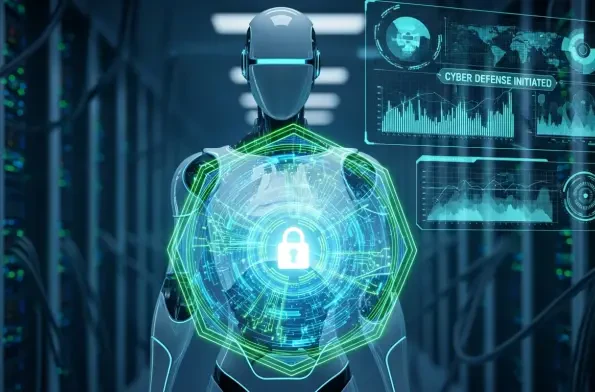Imagine a world where a single line of code, overlooked in the rush to meet deadlines, becomes the gateway for a devastating cyberattack, costing a company millions in damages and trust. This scenario is not a distant fear but a daily reality for organizations grappling with the complexities of modern software development. With cyber threats evolving at an unprecedented pace, the need for robust security solutions has never been more critical. AI-driven vulnerability detection emerges as a transformative technology, promising to revolutionize how developers and security teams safeguard applications. This review delves into the capabilities, innovations, and real-world impact of this cutting-edge approach, exploring its role in reshaping DevSecOps workflows.
Understanding the Core of AI-Powered Security
AI-driven vulnerability detection leverages machine learning and advanced algorithms to identify security flaws in code and applications with remarkable precision. Unlike traditional methods that often rely on static rules or manual reviews, this technology adapts to new threats by learning from vast datasets of known vulnerabilities and attack patterns. Its rise aligns with the increasing sophistication of cyber threats, as attackers exploit intricate software architectures and open-source components at scale.
The relevance of this technology extends beyond mere threat detection; it integrates seamlessly into the DevOps pipeline, fostering a culture of security from the earliest stages of development. By embedding automated scans into build and test phases, it addresses the historical disconnect between development speed and security rigor. This alignment is vital in an era where rapid deployment cycles often outpace manual security checks, leaving applications exposed.
Positioned within the broader cybersecurity landscape, AI-driven tools bridge the gap between developers and security professionals, enabling collaborative workflows under the DevSecOps framework. This integration not only mitigates risks but also enhances efficiency, ensuring that security becomes a shared responsibility rather than a bottleneck. As software complexity grows, such solutions are indispensable for maintaining trust in digital ecosystems.
Key Features and Technical Breakthroughs
Agentic AI: Precision in Vulnerability Hunting
At the heart of AI-driven vulnerability detection lies agentic AI, a sophisticated mechanism that autonomously analyzes code to pinpoint critical security issues. This technology excels in distinguishing between genuine threats and benign anomalies, achieving true-positive rates as high as 97% in some implementations. Such precision minimizes the noise of false positives, a common frustration in traditional security tools, allowing developers to focus on actionable fixes.
Beyond detection, agentic AI prioritizes vulnerabilities based on their potential impact, guiding teams toward the most pressing risks first. This capability is particularly valuable in high-pressure environments where time is a scarce resource. By automating these processes, it reduces manual overhead and boosts confidence in the security posture of applications across diverse industries.
The performance metrics of agentic AI underscore its transformative potential in security workflows. With the ability to adapt to evolving threats through continuous learning, it offers a proactive defense mechanism that traditional tools struggle to match. This adaptability ensures that even novel attack vectors are identified before they can be exploited, reinforcing the resilience of software systems.
Code Property Graph and Reachability Insights
Another groundbreaking innovation is the Code Property Graph (CPG), a powerful framework that maps data and control flows within applications to uncover hidden vulnerabilities. By creating a detailed representation of code structure, CPG enables deeper insights into how data moves through systems, revealing potential points of exploitation that might otherwise go unnoticed. This approach marks a significant leap forward in vulnerability analysis.
Complementing CPG is reachability analysis, a method particularly effective for detecting flaws in open-source components, which are ubiquitous in modern software. With studies showing that up to 92% of such vulnerabilities can be identified through this technique, it provides a critical layer of defense against risks embedded in third-party libraries. Its ability to trace exploitable paths enhances the accuracy of security assessments.
The real-world impact of these technologies is evident in their capacity to deliver granular security insights. By combining structural mapping with path analysis, they empower organizations to address risks at a fundamental level, fortifying applications against sophisticated attacks. This technical synergy is a cornerstone of modern vulnerability detection strategies, driving measurable improvements in software safety.
Emerging Trends in Security and Development Integration
The landscape of AI-driven vulnerability detection is evolving rapidly, with a clear shift toward embedding security natively within DevSecOps frameworks. This trend reflects an industry-wide recognition that security must be an integral part of the development lifecycle, rather than a separate or retrospective process. Such integration streamlines workflows, reducing friction between teams and accelerating secure software delivery.
A notable development is the increasing prevalence of AI-generated code, which, while boosting productivity, introduces new security risks. Reports indicate that only about 55% of code produced by AI tools is inherently secure, highlighting the urgent need for robust detection mechanisms. Addressing these vulnerabilities at the source is becoming a priority for organizations aiming to balance innovation with safety.
Industry efforts are also focusing on combating tool sprawl, where multiple disjointed security solutions create complexity and inefficiency. By consolidating AI-driven vulnerability detection into unified platforms, companies are simplifying the security stack, enabling seamless collaboration across development stages. This convergence is poised to redefine how security is perceived, making it a default component of software creation.
Real-World Impact and Industry Applications
Across sectors like software development, financial services, and healthcare, AI-driven vulnerability detection is proving its worth in securing critical applications. In software firms, these tools are embedded into continuous integration pipelines, scanning code during build and test phases to catch issues before deployment. This proactive approach minimizes the risk of vulnerabilities reaching production environments.
In industries with stringent compliance requirements, such as finance and healthcare, the technology addresses unique challenges like securing APIs and managing open-source dependencies. For instance, financial institutions leverage AI to protect transactional systems by identifying flaws in API endpoints, while healthcare providers use it to safeguard patient data within complex software ecosystems. These tailored implementations highlight the versatility of the technology.
Specific use cases further illustrate its value, such as in organizations dealing with sprawling codebases where manual reviews are impractical. By automating vulnerability detection and providing verified fixes, the technology enables teams to maintain security without sacrificing speed. This balance is crucial for industries under constant threat from cyberattacks, ensuring both innovation and protection.
Challenges Hindering Wider Adoption
Despite its promise, AI-driven vulnerability detection faces significant hurdles in achieving widespread adoption. Technical challenges include the need to keep pace with rapidly evolving cyber threats, as attackers continually devise new methods to bypass defenses. Ensuring that AI models remain updated and effective against these dynamic risks requires substantial resources and expertise.
Compatibility with diverse development environments also poses a barrier, as organizations often operate on heterogeneous tech stacks that may not align with standardized AI tools. Additionally, regulatory concerns around data privacy and automated decision-making add layers of complexity, particularly in heavily regulated sectors. Navigating these constraints demands careful planning and robust governance frameworks.
Market adoption is further complicated by issues of trust and scalability, as developers and security teams must be confident in the accuracy of automated remediation suggestions. Ongoing efforts to refine algorithms and enhance integration capabilities are critical to overcoming these obstacles. Building this trust is essential for the technology to become a staple in software security practices.
Future Prospects for AI-Enhanced Security
Looking ahead, the trajectory of AI-driven vulnerability detection points toward significant advancements in algorithm sophistication and integration. Potential breakthroughs in machine learning could further enhance the precision and speed of threat identification, enabling real-time responses to emerging risks. These innovations hold the promise of creating even more resilient software ecosystems.
The integration of security directly into AI development tools is another area of focus, aimed at countering inherent risks in AI-generated code from the outset. By embedding vulnerability detection into the very platforms used for coding, the industry can preemptively address flaws, reducing downstream security burdens. This forward-thinking approach could redefine development norms over the coming years.
Long-term, the impact of these technologies will likely extend across industries, fostering safer digital environments for businesses and society at large. As security becomes a foundational element of software creation, the ripple effects could enhance trust in technology, driving innovation while mitigating risks. This vision of a secure, interconnected future remains a compelling goal for stakeholders in the cybersecurity domain.
Final Thoughts and Next Steps
Reflecting on this exploration, AI-driven vulnerability detection stands as a pivotal advancement in cybersecurity, offering unmatched precision and integration within DevSecOps workflows. Its ability to address complex threats through innovations like agentic AI and Code Property Graph technology marks a turning point in how security is approached. The real-world applications across diverse sectors demonstrate its practical value in safeguarding critical systems.
Moving forward, organizations need to prioritize investment in scalable AI solutions that can adapt to diverse environments and evolving threats. Collaborative efforts between developers, security teams, and tool providers are essential to refine accuracy and build trust in automated systems. Exploring partnerships for continuous updates and training of AI models will ensure sustained effectiveness against new vulnerabilities.
Additionally, regulatory frameworks must evolve alongside the technology to address privacy and compliance challenges without stifling innovation. Industry leaders are encouraged to advocate for standards that balance security needs with operational freedom. By taking these steps, the potential of AI-driven vulnerability detection can be fully realized, paving the way for a more secure digital landscape.













